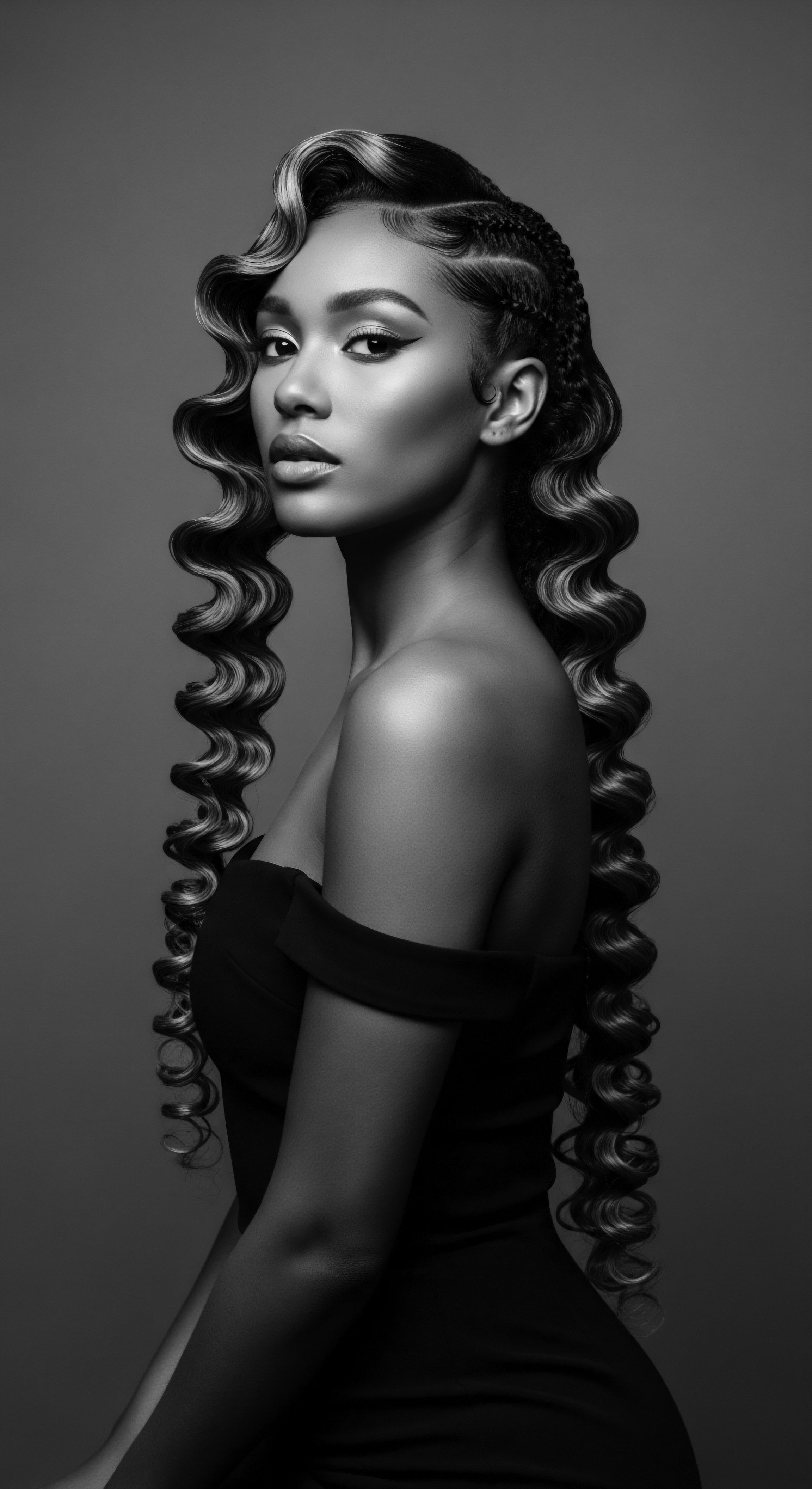
Fundamentals
The concept of “Hair Straightening Impact” encompasses the profound transformations, both physical and experiential, that occur when textured hair is altered from its natural coiled or curled state to a straightened form. This alteration reaches beyond mere aesthetic shifts, touching upon elemental biology, societal expectations, and the deeply personal connection individuals hold with their hair. To understand this impact fully, one must consider the delicate structures of hair itself and the earliest human endeavors to manipulate its form.
Hair, at its fundamental level, consists primarily of a protein known as Keratin. These keratin molecules align in intricate bundles, held together by various bonds, most notably Disulfide Bonds. The number and arrangement of these disulfide bonds significantly influence hair’s inherent shape, dictating whether a strand will be straight, wavy, curly, or tightly coiled.
Tightly coiled hair, characteristic of many Black and mixed-race ancestries, possesses a greater density of these bonds, alongside an oval or flattened follicle shape, which encourages the distinctive helical pattern. When considering the basic process of straightening, it involves breaking these bonds to temporarily or permanently reconfigure the hair’s structure, allowing it to lay flat.

Early Methods and Simple Meaning
For generations, human cultures have sought to reshape hair, driven by practical needs or artistic expression. The earliest attempts at hair straightening were often rooted in available natural resources and rudimentary tools. These methods, while less chemically aggressive than modern techniques, aimed to temporarily smooth the hair. The essence of the Hair Straightening Impact, in its simplest terms, lies in this physical change, a visible shift in the hair’s natural growth pattern.
The fundamental definition of Hair Straightening Impact centers on the deliberate alteration of hair’s inherent coiled or curled structure to a linear form, initiating a cascade of physical and cultural shifts.
Historical accounts, particularly from ancient African civilizations, illustrate the early ingenuity applied to hair care. While pre-colonial African societies primarily celebrated and adorned textured hair in its natural state, employing elaborate braids, twists, and locs to convey status, identity, and spirituality, there were also practices designed for temporary smoothing or elongation. These practices often involved:
- Oiling and Wrapping ❉ Using rich natural oils and butters, sometimes combined with heat from the sun or a fire, to lubricate and stretch hair, then wrapping it tightly with cloth or string overnight. This helped to elongate the curl pattern, reducing its natural volume.
- Weighting ❉ Employing various forms of weights or tension to gently pull the hair, aiming to stretch curls and minimize shrinkage.
- Natural Compressions ❉ Techniques like “African threading,” where hair is wrapped tightly with thread along its length, creating stretched, elongated sections without direct heat or chemicals.
These ancient practices, though different in their execution, embody the foundational meaning of Hair Straightening Impact ❉ a desire to modify hair’s natural disposition. Such modifications, even in their most rudimentary forms, introduced an initial interaction between human intent and hair’s biological reality, laying the groundwork for more complex transformations in later eras. The simple meaning of this impact, therefore, rests in the direct physical change and the human effort exerted to achieve it.

Intermediate
Expanding beyond its foundational meaning, the Hair Straightening Impact at an intermediate level delves into the evolving tools, chemical compositions, and immediate socio-cultural resonances. This period witnessed the widespread dissemination of straightening technologies, deeply intertwining with historical shifts and the quest for new forms of appearance. The intermediate understanding explores how these methods began to shape not just individual hair strands, but also broader communal expressions of beauty and belonging.
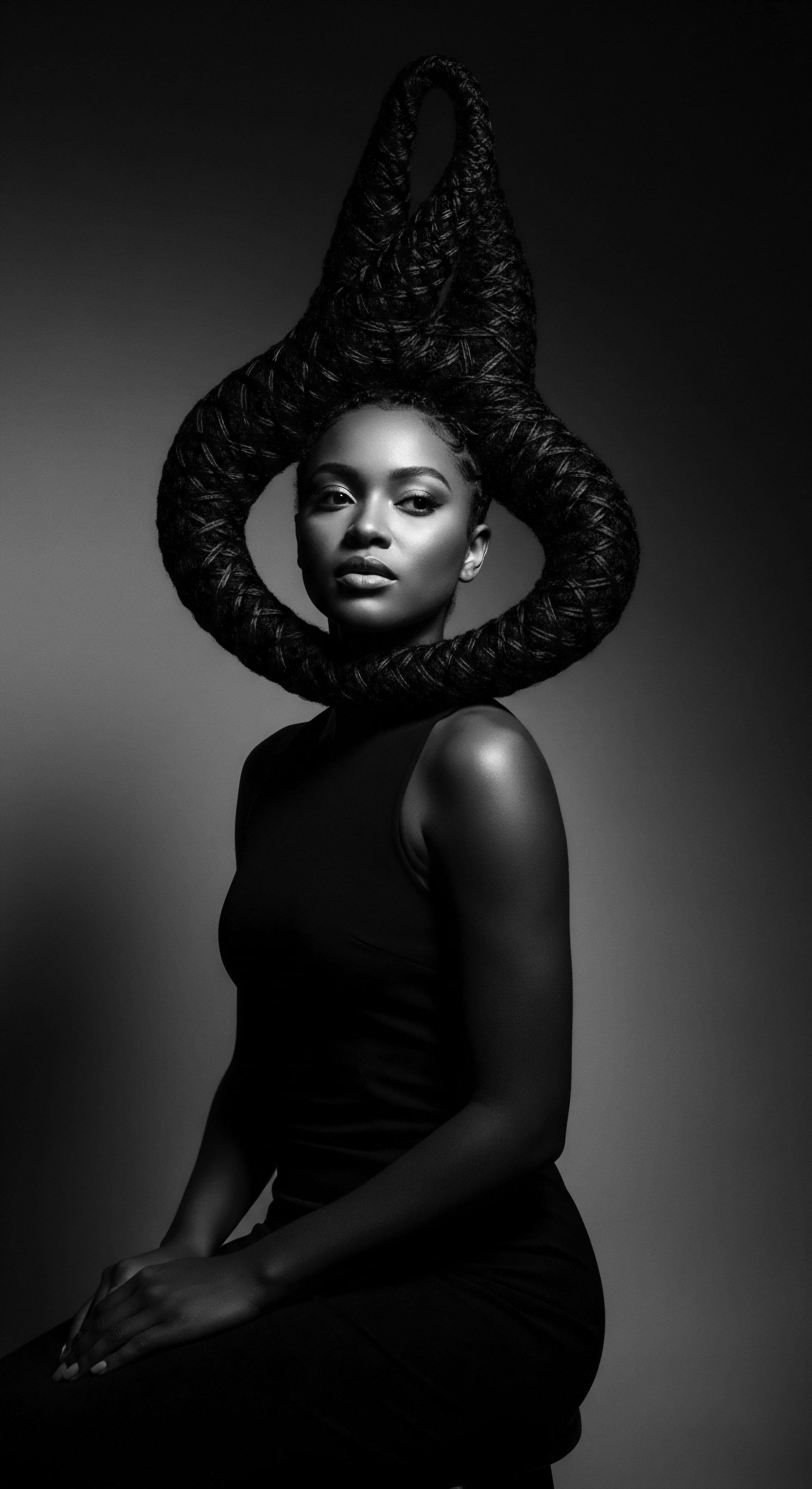
The Emergence of Thermal and Chemical Methods
The 19th and early 20th centuries marked a turning point in hair straightening practices, largely due to technological innovations. The hot comb, often associated with African American hair culture, saw its widespread adoption during this period. While its origins trace back to French hairdressers like Marcel Grateau in the 1870s for creating waves and straightening fine hair, its adaptation for Afro-textured hair revolutionized hair care within Black communities.
Madam C.J. Walker, a visionary entrepreneur, played a significant role in popularizing and refining the hot comb for textured hair, creating a system that focused on scalp health alongside hair smoothing.
This early thermal method involved heating a metal comb over a stove or flame, then passing it through oiled hair to temporarily flatten the coils. The heat would break the hair’s temporary hydrogen bonds, allowing the hair to become straight until exposed to moisture. The Hair Straightening Impact here gained a new dimension ❉ a temporary but highly effective means of achieving a desired look, creating both opportunity and, for some, new forms of pressure.
Simultaneously, the development of chemical relaxers offered a more permanent solution. Early chemical formulations, often containing lye (sodium hydroxide), emerged in the early 1900s, with innovators like Garrett Augustus Morgan credited with pioneering the first hair relaxer. These substances fundamentally alter the hair’s structure by breaking the stronger Disulfide Bonds within the keratin protein. This process permanently reshapes the hair, making it straight even after washing, until new growth appears.
The intermediate understanding of Hair Straightening Impact reveals a historical pivot ❉ the introduction of thermal and chemical methods provided unprecedented control over hair texture, ushering in new aesthetic possibilities and complex societal dynamics.
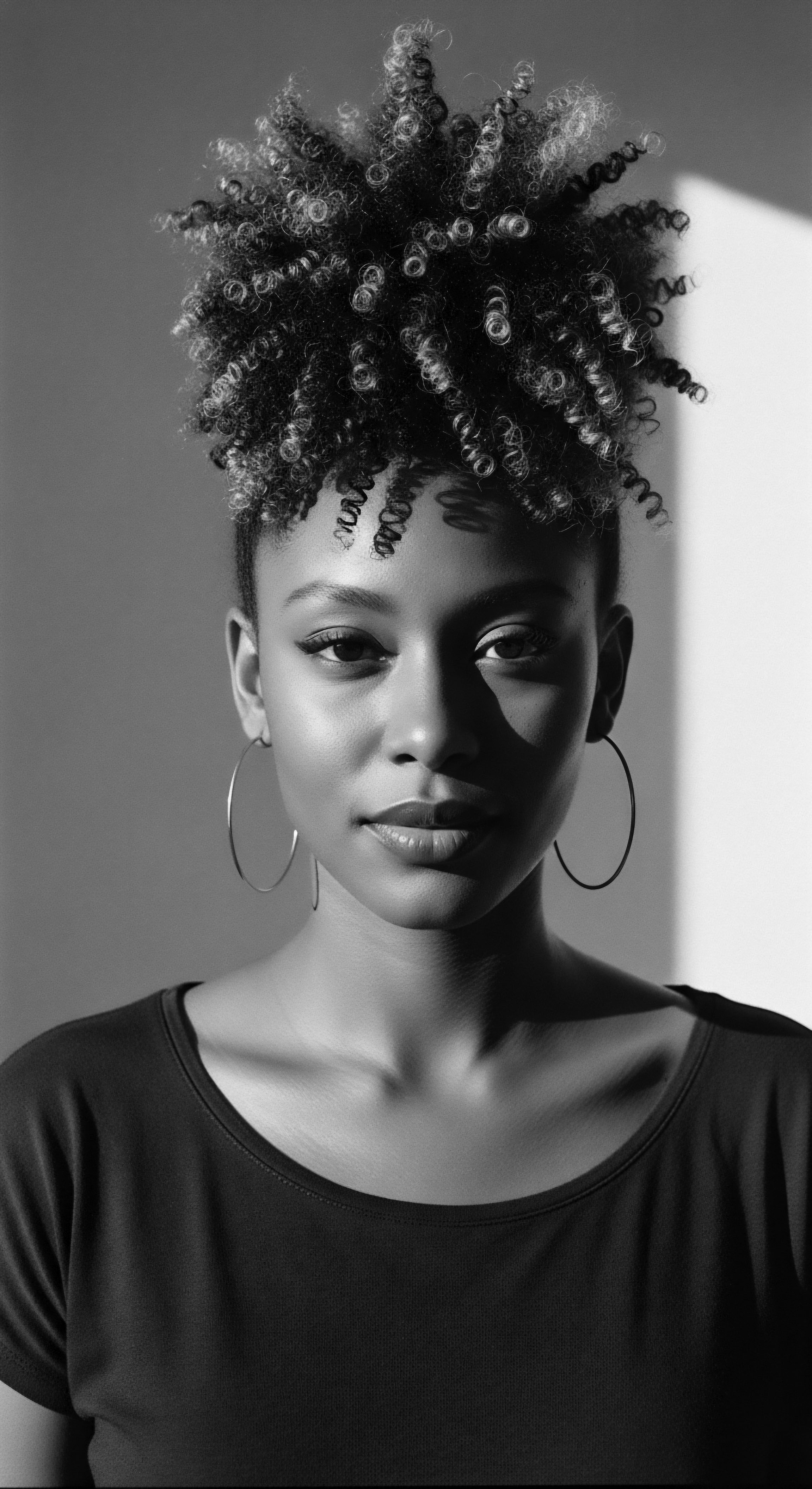
Societal Currents and Early Perceptions
The widespread adoption of these straightening methods, particularly within Black and mixed-race communities, cannot be separated from the prevailing social and economic currents of the time. Post-emancipation, the struggle for acceptance and economic stability often led to a desire to conform to Eurocentric beauty standards. Straightened hair became a symbol of “good grooming” and, for many, a perceived necessity for navigating a society that often deemed natural Black hair as “unprofessional” or “unkempt”. This created a profound dilemma, where personal expression collided with systemic biases.
The intermediate meaning of Hair Straightening Impact therefore encompasses this complex interplay:
- Appearance and Access ❉ The belief that straightened hair could open doors to social and economic opportunities, reducing perceived threats to White society. This perception was not imagined; research indicates that Black women with natural hairstyles were often perceived as less professional and less likely to be recommended for job interviews compared to Black women with straightened hair.
- Internalized Hierarchies ❉ The emergence of “good hair” versus “bad hair” narratives within the Black community itself, where straighter textures were valued over tightly coiled ones. This texturism, a preference for straighter hair textures, became a deeply embedded aspect of beauty standards.
- The Salon as a Social Hub ❉ Hair salons became central spaces for community, knowledge sharing, and cultural transmission, even as they facilitated straightening practices. These spaces were often segregated, offering a sanctuary for Black women to connect and share experiences.
The introduction of these methods had clear advantages for many, offering manageability and versatility that some natural styles, at the time, were not perceived to offer. Yet, it also created new burdens, both financial and physical, and contributed to a complex psychological landscape around hair and identity. The intermediate phase of Hair Straightening Impact marks the point where these practices became deeply embedded in the cultural fabric of many Black and mixed-race communities, a historical reality worth careful consideration.

Academic
The academic understanding of “Hair Straightening Impact” transcends rudimentary definitions, interpreting it as a multifaceted phenomenon that intersects biological, sociological, and psychological dimensions, particularly within the heritage of Black and mixed-race communities. This rigorous interpretation acknowledges the profound alterations to hair’s intrinsic structure and, critically, scrutinizes the deep cultural and psychological echoes of these changes across generations. It involves a critical examination of historical forces, systemic biases, and the very construction of beauty ideals.
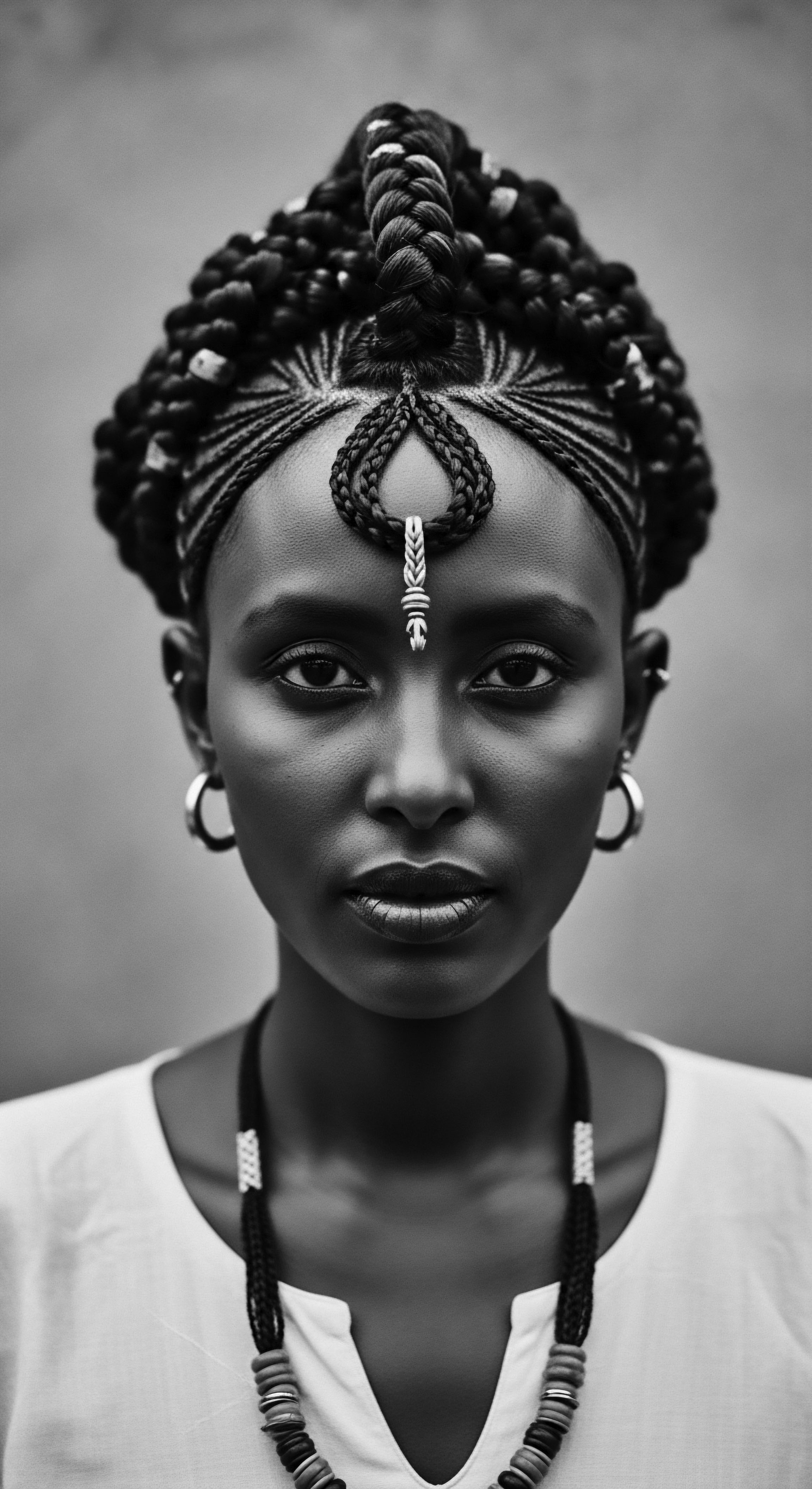
Meaning of Hair Straightening Impact ❉ An Academic Delineation
From an academic standpoint, the Hair Straightening Impact signifies the comprehensive, often intergenerational, consequences arising from the chemical or thermal modification of naturally textured hair to a linear form. This includes the observable physical changes to hair’s integrity, the physiological responses of the scalp, and the broader, intangible ramifications on individual and collective identity, self-perception, social mobility, and health within specific cultural contexts, most notably the African diaspora. It is a concept requiring an analytical lens, drawing from disciplines spanning cosmetology science to critical race theory, to fully elucidate its profound significance.

Biological Alterations ❉ The Science of a Strand Transformed
The intrinsic molecular architecture of hair, primarily composed of the protein keratin, forms the bedrock of its natural texture. The unique helical structure of textured hair is sustained by a high concentration of Disulfide Bonds, which are strong chemical linkages between sulfur atoms in the amino acid cysteine. These bonds, alongside hydrogen bonds and salt bonds, dictate the hair’s curl pattern, strength, and elasticity.
The process of straightening, particularly through chemical relaxers, instigates a direct chemical reaction that irreversibly breaks these disulfide bonds. Alkaline agents, such as sodium hydroxide (lye relaxers) or guanidine hydroxide (no-lye relaxers), are introduced to disrupt these foundational connections. This breakage allows the tightly coiled keratin chains to uncoil and re-align into a straightened configuration. A neutralizer is then applied to reform new, straighter disulfide bonds, solidifying the altered structure.
Thermal straightening, while not chemically altering the disulfide bonds, temporarily breaks the weaker hydrogen bonds within the hair, allowing for a straight appearance until moisture is reintroduced. Repeated application of high heat, however, can denature the keratin protein, leading to cuticle damage, moisture loss, and increased susceptibility to breakage, a form of mechanical Hair Straightening Impact often underrecognized in its cumulative effect.
The elucidation of Hair Straightening Impact here is rooted in understanding these molecular transformations. When hair is perpetually manipulated through these means, its natural resilience can diminish, leading to concerns such as:
- Reduced Elasticity ❉ The hair’s ability to stretch and return to its original form is compromised, making it more brittle.
- Increased Porosity ❉ Damage to the outer cuticle layer causes hair to absorb and lose moisture rapidly, leading to dryness.
- Scalp Irritation and Chemical Burns ❉ Chemical relaxers, especially lye-based variants, can cause severe irritation, burns, and scarring on the scalp, which can lead to permanent hair loss (traction alopecia) over time.
- Systemic Health Concerns ❉ Emerging research indicates potential links between frequent use of chemical hair straighteners and certain health outcomes, including uterine cancer. For example, a study from the U.S. National Institutes of Health, involving nearly 33,500 women over almost 11 years, estimated that while 1.64% of women who never used hair straighteners would develop uterine cancer by age 70, this risk increased to 4.05% for frequent users, highlighting a concerning doubling rate among those who regularly use these products. This finding warrants continued investigation and greater awareness, particularly given that Black women, who initiate use at earlier ages and use relaxers more frequently, might face disproportionate exposure.

Sociocultural Interpretations ❉ Heritage, Identity, and Assimilation
The sociocultural interpretation of Hair Straightening Impact delves into the historical and ongoing interplay between hair texture, societal power dynamics, and the construction of identity within diasporic communities. For centuries, and acutely since the era of transatlantic slavery, the natural hair textures of Africans were systematically devalued within Western societies. Slave traders often shaved the heads of enslaved Africans as a deliberate act of dehumanization, stripping them of cultural identity and ancestral connection. This began a complex narrative where Afro-textured hair was equated with “unruliness,” “uncleanliness,” or “unprofessionalism”.
This historical context shaped the perception of hair straightening as a means of survival and assimilation. Straight hair became inextricably linked to notions of respectability, social acceptance, and economic opportunity in a Eurocentric world. The “Hair Straightening Impact” here signifies not only the physical change but also the profound psychological and social pressure to conform.
Many Black women felt, and continue to feel, compelled to straighten their hair to navigate academic, professional, and social environments, a practice deeply ingrained as a “social and economic necessity” (Banks, 2000, p. 46).
Academic analysis of Hair Straightening Impact reveals a complex interplay of physical alteration, historical coercion, and the enduring psychological and social pressures exerted by Eurocentric beauty standards on textured hair communities.
The phenomenon of Texturism emerged as a direct consequence of this historical subjugation, creating internal hierarchies within Black communities where lighter skin tones and straighter hair textures were often privileged. This insidious legacy meant that even within their own communities, individuals could face discrimination based on hair texture.
The legacy of this impact is evident in the historical preference for straightened styles. For instance, in the 1950s and early 1960s, nearly all Black women straightened their hair, aligning with principles of “good grooming” within prevailing societal norms. The Afro and natural, kinky or curly hair were largely rejected, and those who chose to wear natural styles often faced opposition from their friends and family. This statistical norm underscores the pervasive societal pressure and the deep cultural meaning ascribed to straightened hair as a pathway to acceptance.
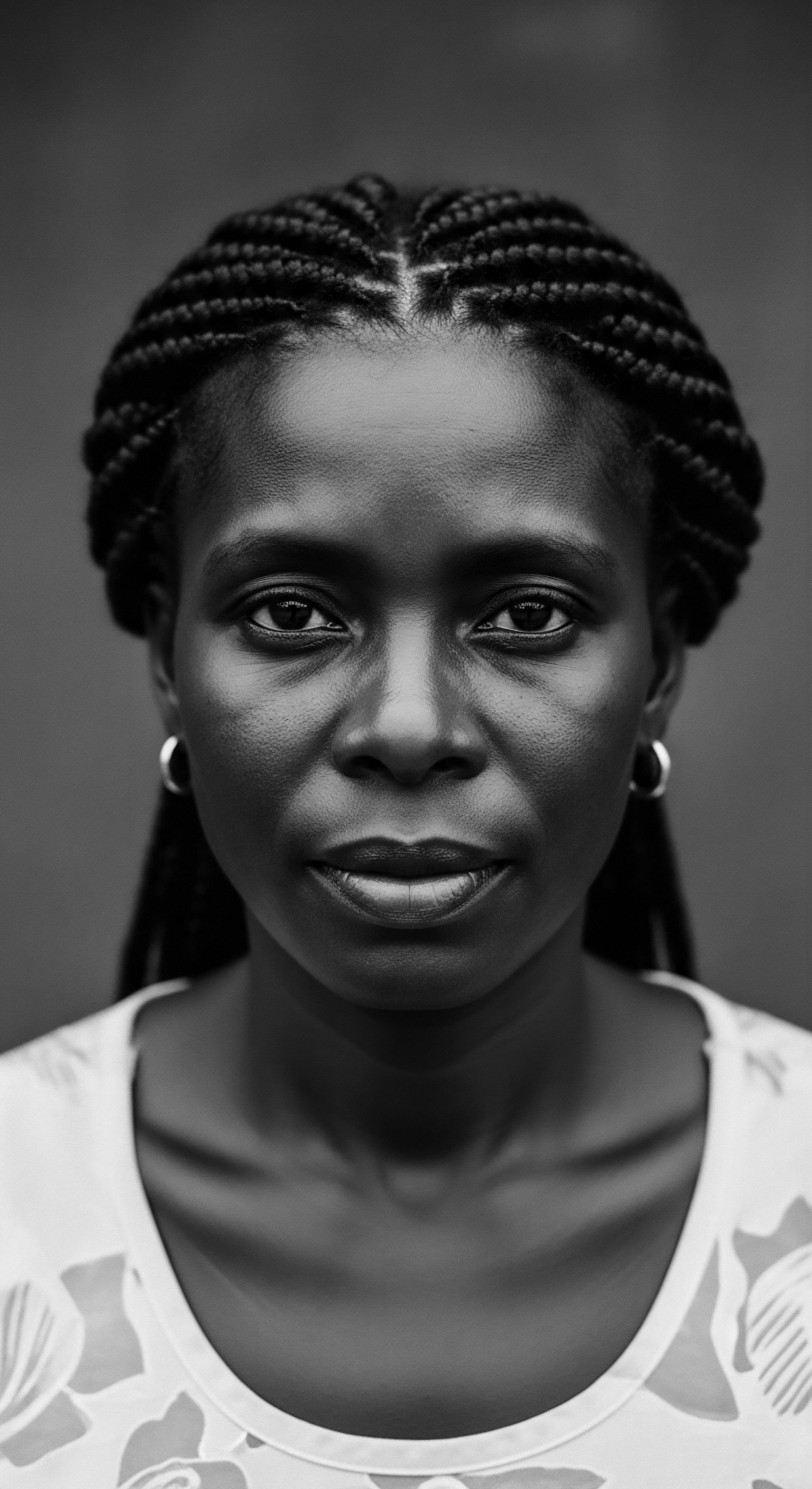
The Psychological Echo ❉ Identity, Self-Perception, and Mental Well-Being
The psychological dimension of the Hair Straightening Impact is particularly resonant, delving into how these practices shape self-image, identity, and mental health. The decision to straighten hair, for many Black and mixed-race individuals, is rarely a simple aesthetic preference. It often carries the weight of historical memory, societal expectation, and the complex interplay of internalized biases.
Research on the experiences of Black women provides compelling evidence of this psychological toll. A study exploring the narratives of 38 Black women who underwent chemical hair straightening during their youth identified “manageable” hair, community belongingness, and maternal choice as primary reasons for adopting the practice. Yet, these narratives also revealed significant physical harm and psychological conflict as consequences of this beauty practice. The desire for “manageable” hair, itself a concept rooted in a societal devaluation of natural texture, often stems from a lifetime of messages that portray textured hair as difficult, unruly, or in need of “taming.”
The ongoing pressure to conform to Eurocentric beauty standards contributes to internalized racism and negative self-image. Individuals may develop anxiety or hypervigilance regarding how their hair is perceived in professional or academic spaces. Constant microaggressions related to hair—such as unsolicited comments, touching, or being told their hair is “unprofessional”—contribute to chronic stress and cultural disconnection. This speaks to a profound psychological burden, where hair choice is not simply a personal style, but a site of ongoing negotiation with societal prejudice.
Moreover, the mental health field itself has, at times, perpetuated these biases. Instances have been documented where Afro-textured hair was used to signal a “decline in mental health” and categorized under “self-neglect” within inpatient rehab settings. A particularly poignant example describes a biracial Black Assistant Psychologist witnessing a service user being encouraged to chemically “relax” her hair, then being told to keep a picture of her straightened hair as a reminder of how she “should look” as a demonstration of “mental health recovery”.
This alarming narrative underscores how systemic racism, often manifesting as a profound lack of awareness, can underpin even therapeutic environments, reinforcing damaging notions of beauty and well-being linked to hair straightening. This example illuminates the critical connection between Hair Straightening Impact and the historical use of hair as a marker of perceived mental health status within clinical settings, an often-overlooked yet deeply concerning aspect of its pervasive influence.
The academic delineation of Hair Straightening Impact therefore includes its profound implications for:
- Body Image and Self-Esteem ❉ The continuous exposure to beauty ideals that exclude or devalue natural textured hair can lead to lower hair satisfaction and broader body image concerns.
- Coping Mechanisms ❉ Hair straightening can become a coping strategy to avoid discrimination or perceived social penalties.
- Intergenerational Trauma ❉ The transmission of these beauty practices and the underlying pressures from mothers to daughters, often with good intentions, perpetuates the cycle of hair alteration and its associated psychological burdens.
Understanding the Hair Straightening Impact from an academic lens means acknowledging its deep roots in historical oppression, its complex chemical and physical realities, and its far-reaching consequences on the psychological and social well-being of individuals and communities. It calls for a nuanced perspective that moves beyond simplistic notions of choice, recognizing the systemic forces that shape hair practices.
| Method Ancient Oiling/Wrapping |
| Mechanism of Action Physical tension, lubrication (hydrogen bond stretching) |
| Historical Context/Heritage Link Pre-colonial African practices, maintaining length and moisture, communal rituals. |
| Impact on Hair & Community Temporary elongation, retained hair health, fostered community bonds. |
| Method Hot Comb/Pressing |
| Mechanism of Action Heat (temporary hydrogen bond breakage) |
| Historical Context/Heritage Link 19th-20th century, popularized by Black entrepreneurs (Madam C.J. Walker), assimilation pressures. |
| Impact on Hair & Community Temporary straightening, potential heat damage, economic opportunity, salon culture. |
| Method Chemical Relaxers (Lye/No-Lye) |
| Mechanism of Action Alkaline agents (permanent disulfide bond breakage) |
| Historical Context/Heritage Link Early 20th century onwards, response to rigid Eurocentric beauty standards, "good hair" construct. |
| Impact on Hair & Community Permanent straightening, significant damage risk (burns, breakage), deep psychological impact, health concerns. |
| Method Keratin Treatments |
| Mechanism of Action Keratin layer + heat (coating & some bond restructuring) |
| Historical Context/Heritage Link Modern development, less damaging chemical approach, aims for smoothness and frizz reduction. |
| Impact on Hair & Community Semi-permanent smoothing, generally safer than traditional relaxers, appeals to a broader audience. |
| Method The progression of straightening methods reflects a complex journey from ancestral care to chemically advanced interventions, each bearing a unique connection to textured hair heritage and its evolving societal pressures. |
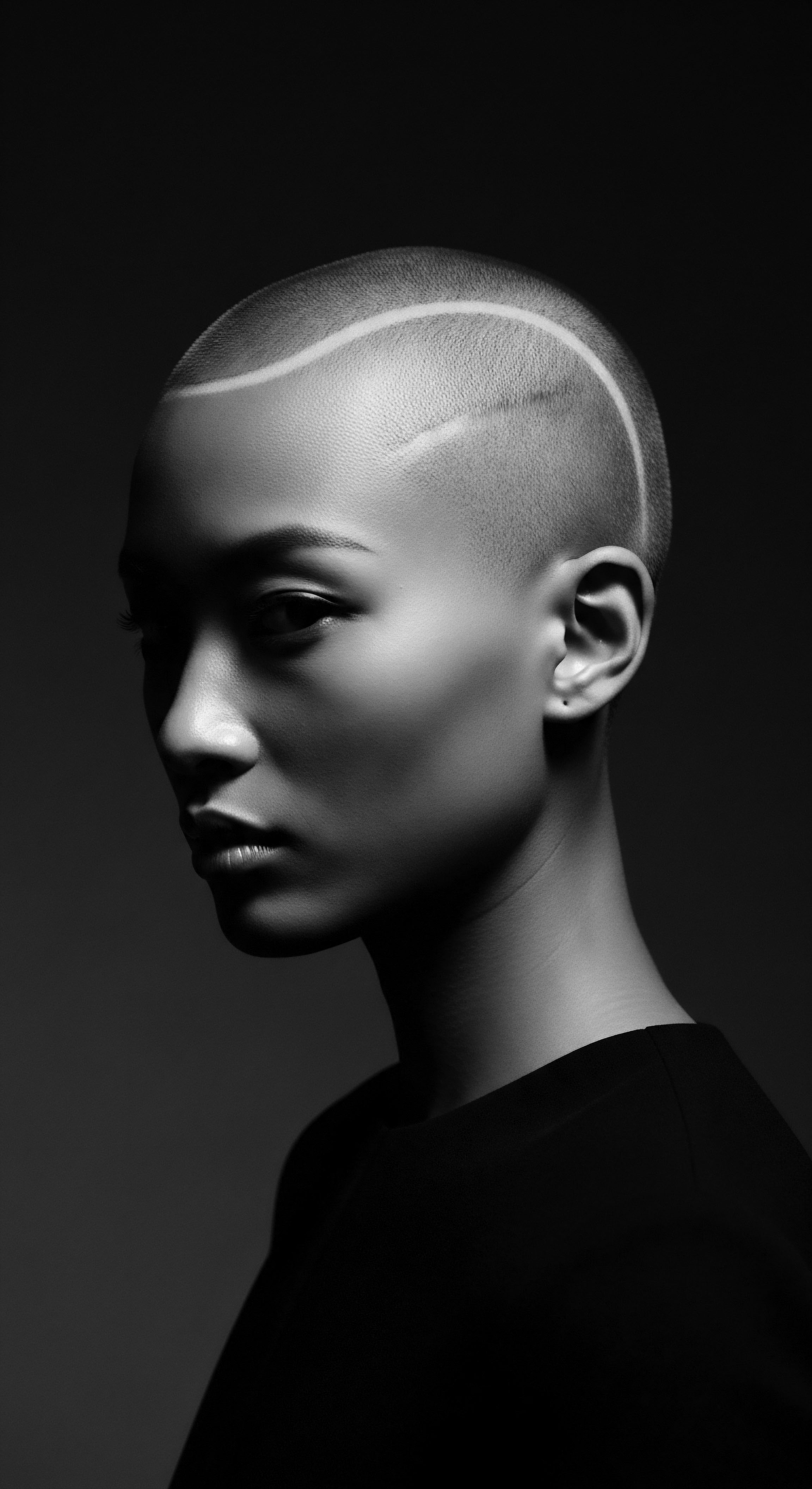
Reflection on the Heritage of Hair Straightening Impact
Our contemplation of the Hair Straightening Impact concludes not with a finality, but with an open reflection on the enduring heritage and evolving significance of textured hair. The threads of history, science, and personal experience, when woven together, reveal a narrative of profound resilience, adaptation, and an unwavering connection to ancestral wisdom. We have journeyed through the elemental biology that grants our coils and curls their wondrous strength, to the tender communal rituals of care that nourished both hair and spirit, and finally, to the helix unbound, symbolizing the journey towards self-acceptance and the shaping of new futures.
The story of hair straightening, particularly within Black and mixed-race communities, serves as a poignant reminder of how societal expectations can intersect with personal identity. It underscores the profound pressure to conform to Eurocentric ideals, a pressure that led many to seek alterations, often at a cost to physical health and psychological well-being. This complex legacy is not one of simple choices; rather, it reflects generations navigating systems designed to devalue their innate beauty. Yet, within this historical tapestry, we also find unwavering spirit, a collective memory of hair as a crown, a symbol of identity, status, and deep spiritual connection, reaching back to pre-colonial African traditions.
Today, as voices rise to reclaim and celebrate natural texture, the Hair Straightening Impact takes on new dimensions. It informs our understanding of the journey toward embracing one’s authentic self, recognizing the beauty inherent in every curl, kink, and coil. It emphasizes the importance of understanding our hair’s unique biological needs, celebrating its heritage, and making choices that truly serve its health and our holistic well-being. The knowledge gained from examining the history of straightening equips us to build a future where textured hair is universally respected, admired, and free from the burdens of societal prejudice.
The journey forward calls for a continuous dialogue, one that honors the past while building a more inclusive present. It means recognizing that the hair on our heads carries stories, traditions, and the undeniable imprint of generations. When we engage with our hair, whether through ancestral practices or contemporary care, we are participating in a timeless ritual, connecting with the very source of who we are. Our hair remains a living archive, a testament to enduring strength, creativity, and the undeniable beauty of our heritage.
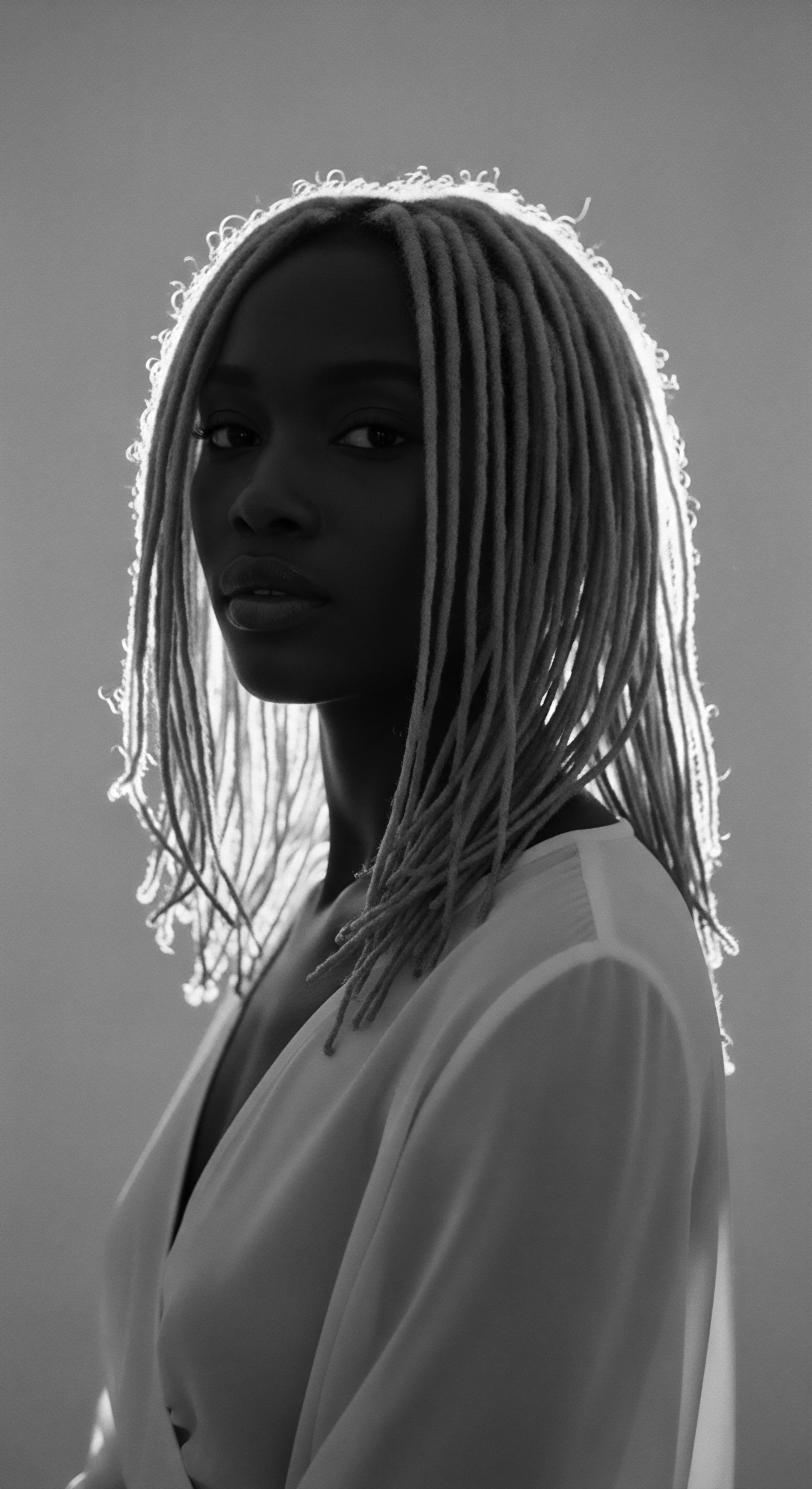
References
- Banks, Ingrid. Hair ❉ A Project on Race and Gender. New York University Press, 2000.
- Abdullah, Adilah. “Hair Matters ❉ Beauty, Power, and the Politics of Identity.” Black Issues in Higher Education, 1998.
- Byrd, Ayana D. and Lori L. Tharps. Hair Story ❉ Untangling the Roots of Black Hair in America. St. Martin’s Griffin, 2014.
- Donaldson, Chanel. “Hair Alteration Practices Amongst Black Women and the Assumption of Self-Hatred.” Applied Psychology OPUS, 2018.
- Johnson, Yvette, and Marilyn E. Bankhead. “Identity and Academic Success Among Underrepresented Ethnic Minorities ❉ An Interdisciplinary Review and Integration.” Journal of Social Issues, 2014.
- Rosette, Ashleigh Shelby, and Christy Zhou Koval. “Hair Discrimination in the Workplace ❉ How Implicit Biases Affect Perceptions of Professionalism.” Social Psychological and Personality Science, 2020.
- Rooks, Noli. Hair Raising ❉ Beauty, Culture, and African American Women. Rutgers University Press, 1996.
- Thompson, Cheryl. “Black Women and Identity ❉ The Politics of Hair.” Women & Therapy, 2009.
- White, Shane, and Graham White. Stylin’ ❉ African American Expressive Culture from Its Beginnings to the Zoot Suit. Cornell University Press, 1998.
- Badillo, David A. “Hair Straightening and the Social Stigma of Not-Straight Hair in the Dominican Republic.” Latin American Perspectives, 2001.
